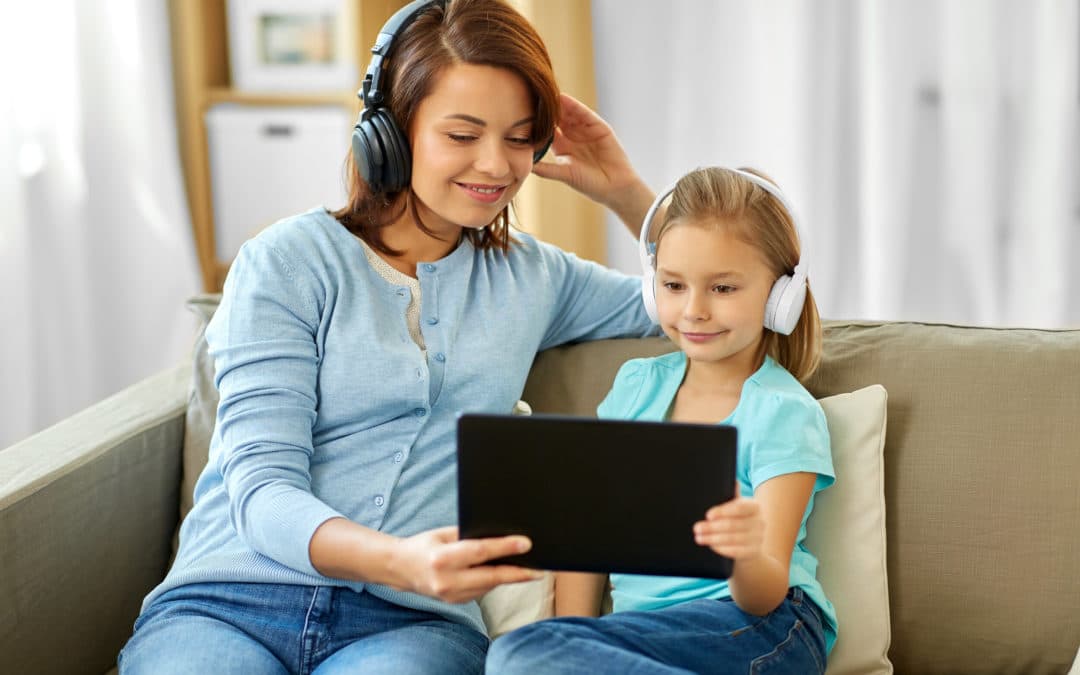If you are interested in raising bilingual kids then it’s time to learn about shadowing. Shadowing a foreign language in its most basic form is simply repeating words and phrases in the language. Shadowing involves playing an audio (or a video with audio) that is continuous and uninterrupted and repeating the words you hear almost simultaneously, word for word.
Spanish Shadowing: What is It?
According to Alexander Arguelles, a polyglot well known for his work in foregign language learning, was the one to really advocate for and develop shadowing. He says shadowing is basically taking a language you don’t know and basically planting it in your brain. Arguelles has a really detailed video on YouTube where he really gives you a comprehensive overview of shadowing and shadowing techniques. However, here is what you need to know if you want to start right now.
To use shadowing for learning a language, simply find an audio in your target language and repeat what you hear.
Arguelles suggests using audio that starts out slow with great enunciation and gradually goes into a more normal pace. In addition to that, walking around purposefully and with good posture as you repeat the audio, he believes, aids language learning.
How Shadowing Works
Naturally, you’re wondering how shadowing works. Well, shadowing mimics the natural way that we learn a language, through listening. Doing this aids in the development of sound patterns, learning how to pronounce words as well as when to use right intonation.
Ways of Shadowing
There are two types of shadowing:
-
Listening to the audio while repeating the words from a transcript or subtitles
-
Blind shadowing which is only listening to the audio and repeating what you hear.
It is suggested that you start with blind shadowing. In this method, you focus on sounds and not so much on the translation and meaning.
How Shadowing Helps Kids Learn
Shadowing is a great idea to help make your children bilingual because children aren’t born knowing any language. At some point, when you were speaking English to them, they didn’t understand a thing you were saying. Therefore, playing Spanish audio that they don’t understand can work, as long as there is also context to go with it, so join your kids in learning.
We know that listening to a language can help language acquisition. In addition to that, repetition is important. According to research presented on Science Daily, repetition is an integral part of language learning. Lilli Kimppa in her doctoral dissertation said, “Unlike existing words, new words showed a neural response enhancement between the early and late stages of exposure on the left frontal and temporal cortices, which was interpreted as the build-up of neural memory circuits.” This means our brains respond differently the first time we hear a word and the 15th time we hear it. It’s because we’re starting to get it!
According to research done in a classroom, teachers found shadowing to be an effective method to elevate the verbal skill of children. The researchers used creative methods such as songs, games and movies. These researchers also echo the idea that repetition is important. In their paper they said, “the facilitator encourages the learners to listen to the audio text as
many times as possible to become familiar with the speaker’s pronunciation.”
How To Shadow Spanish With Your Kids
You can shadow with your kids very easily. The first thing to do is find the right audio. YouTube is a great resource for Spanish audio. The good thing about YouTube is that you can find short films and cartoons, among other videos in Spanish, that you can use for shadowing. These will be fun to shadow because you can change your voice to match the characters, and the storyline is usually interesting for children. Once you find one that your child may be interested in, play it for them. If your children can read, then you can have them use the subtitles. However, if they can’t, that’s okay, they can have fun and learn by repeating the words.
One video you can introduce to your kids is The Monk Girl. The Monk Girl has both Spanish and English subtitles but the audio is in Spanish.
Netflix is another great resource. If you want suggestions about which Netflix shows your kids can watch in Spanish, check out our article here.
To conclude, even though your children may not understand most or any of the words at first, that’s okay. Keep letting them listen and repeat the words in the target language, that’s how they learned English after all. Even though the children are native English speakers, they still do English classes until they graduate high school. Therefore there is value in letting them learn and hone a language by a professional. Check out a class for just $12 bucks! Our methods are tried and proven so you can be confident in your child effectively learning Spanish. If you have any questions, please don’t hesitate to contact us. We’ll be more than happy to help!


